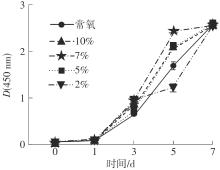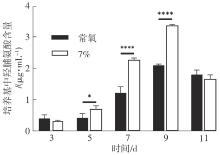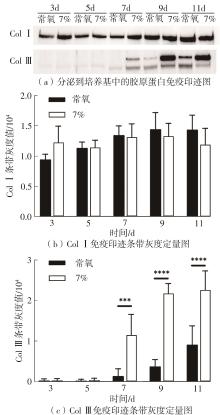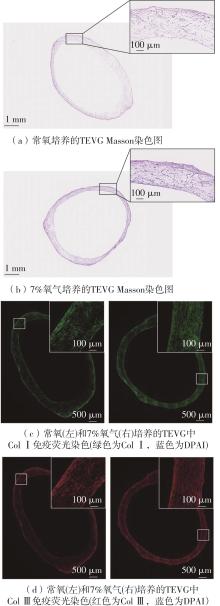| 1 |
TSAO C W, ADAY A W, ALMARZOOQ Z I,et al .Heart disease and stroke statistics-2022 update:a report from the American Heart Association[J].Circulation,2022,145(8):e153-e639.
|
| 2 |
World Health Organization .A global brief on hypertension[R].Geneva:World Health Organization,2013.
|
| 3 |
LLOYD-JONES D, ADAMS R, CARNETHON M, et al .Heart disease and stroke statistics—2009 update:a report from the American Heart Association Statistics Committee and Stroke Statistics Subcommittee[J].Circulation,2009,119(3):e21-e181.
|
| 4 |
HUANG Y, GLOVICZKI P, NOEL A A,et al .Early complications and long-term outcome after open surgical treatment of popliteal artery aneurysms:is exclusion with saphenous vein bypass still the gold standard?[J].Journal of Vascular Surgery,2007,45(4):706 -713.
|
| 5 |
SWAIN T W, CALLIGARO K D, DOUGHERTY M D .Management of infected aortic prosthetic grafts[J].Vascular and Endovascular Surgery,2004,38(1):75-82.
|
| 6 |
GEELHOED W J, MORONI L, ROTMANS J I .Utili-zing the foreign body response to grow tissue engineered blood vessels in vivo[J].Journal of Cardiovascular Translational Research,2017,10:167-179.
|
| 7 |
NIKLASON L E, GAO J, ABBOTT W M,et al .Functional arteries grown in vitro[J].Science,1999,284(5413):489-493.
|
| 8 |
NAEGELI K M, KURAL M H, LI Y,et al .Bioengineering human tissues and the future of vascular replacement[J].Circulation Research,2022,131(1):109-126.
|
| 9 |
WANG H W, CHENG C W, LI C W,et al .Fabrication of pillared PLGA microvessel scaffold using femtosecond laser ablation[J].International Journal of Nanomedicine,2012,7:1865-1873.
|
| 10 |
PENNINGS I, van HAAFTEN E E, JUNGST T,et al .Layer-specific cell differentiation in bi-layered vascular grafts under flow perfusion[J].Biofabrication,2019,12(1):015009/1-13.
|
| 11 |
MCFETRIDGE P S,ABE K, HORROCKS M,et al .Vascular tissue engineering:bioreactor design considerations for extended culture of primary human vascular smooth muscle cells[J].ASAIO Journal,2007,53(5):623-630.
|
| 12 |
TSCHOEKE B, FLANAGAN T C, KOCH S,et al .Tissue-engineered small-caliber vascular graft based on a novel biodegradable composite fibrin-polylactide scaffold[J].Tissue Engineering Part A,2009,15(8):1909-1918.
|
| 13 |
FATHOLLAHIPOUR S, PATIL P S, LEIPZIG N D .Oxygen regulation in development:lessons from embryogenesis towards tissue engineering[J].Cells Tissues Organs,2019,205(5/6):350-371.
|
| 14 |
van VLIMMEREN M A A, DRIESSEN-MOL A, van DEN BROEK M,et al .Controlling matrix formation and cross-linking by hypoxia in cardiovascular tissue engineering[J].Journal of Applied Physiology,2010,109(5):1483-1491.
|
| 15 |
SHIMODA L A .Cellular pathways promoting pulmonary vascular remodeling by hypoxia[J].Physiology,2020,35(4):222-233.
|
| 16 |
FRANTZ C, STEWART K M, WEAVER V M .The extracellular matrix at a glance[J].Journal of Cell Science,2010,123(24):4195-4200.
|
| 17 |
von der MARK K .Localization of collagen types in tissues[J].International Review of Connective Tissue Research,1981,9:265-324.
|
| 18 |
NIKLASON L E, LAWSON J H .Bioengineered human blood vessels[J].Science,2020,370(6513):eaaw8682/1-9.
|
| 19 |
DELLA ROCCA Y, FONTICOLI L, RAJAN T S,et al .Hypoxia:molecular pathophysiological mechanisms in human diseases[J].Journal of Physiology and Biochemistry,2022,78(4):739-752.
|
| 20 |
FANG L, MEI J, YAO B,et al .Hypoxia facilitates proliferation of smooth muscle cells derived from pluripotent stem cells for vascular tissue engineering[J].Journal of Tissue Engineering and Regenerative Medicine,2022,16(8):744-756.
|
| 21 |
HU C, HUANG S, WU F,et al .MicroRNA‑219‑5p participates in cyanotic congenital heart disease progression by regulating cardiomyocyte apoptosis[J].Experimental and Therapeutic Medicine,2021,21:36/1-7.
|
| 22 |
YANG G, LIN C .Long noncoding RNA SOX2‐OT exacerbates hypoxia‐induced cardiomyocytes injury by regulating miR‐27a‐3p/TGFβR1 axis[J].Cardiovascular Therapeutics,2020,2020(1):2016259/1-11.
|
| 23 |
BROWER G L, GARDNER J D, FORMAN M F, et al .The relationship between myocardial extracellular matrix remodeling and ventricular function[J].European Journal of Cardio-Thoracic Surgery,2006,30(4):604-610.
|
| 24 |
MIENALTOWSKI M J, BIRK D E .Structure,physiology,and biochemistry of collagens[J].Advances in Experimental Medicine and Biology,2013,802:5-29.
|
| 25 |
TOBA H, CANNON P L, YABLUCHANSKIY A,et al .Transgenic overexpression of macrophage matrix metalloproteinase-9 exacerbates age-related cardiac hypertrophy,vessel rarefaction,inflammation,and fibrosis[J].American Journal of Physiology-Heart and Circulatory Physiology,2017,312(3):H375-H383.
|
| 26 |
LIU X, WU H, BYRNE M,et al .Type III collagen is crucial for collagen I fibrillogenesis and for normal cardiovascular development[J].Proceedings of the National Academy of Sciences of the United States of America,1997,94(5):1852-1856.
|
| 27 |
FLEISCHMAJER R, MACDONALD E D, PERLISH J S,et al .Dermal collagen fibrils are hybrids of type I and type III collagen molecules[J].Journal of Structural Biology,1990,105(1/2/3):162-169.
|
| 28 |
RONG N, MISTRIOTIS P, WANG X,et al .Restoring extracellular matrix synthesis in senescent stem cells[J].The FASEB Journal,2019,33(10):10954-10965.
|
| 29 |
ERYILMAZ E, TEIZER W, HWANG W .In vitro analysis of the co-assembly of type-I and type-III collagen[J].Cellular and Molecular Bioengineering,2017,10:41-53.
|
| 30 |
GAO J, GUO Z, ZHANG Y,et al .Age-related changes in the ratio of Type I/III collagen and fibril diameter in mouse skin[J].Regenerative Biomaterials,2023,10:rbac110/1-9.
|









